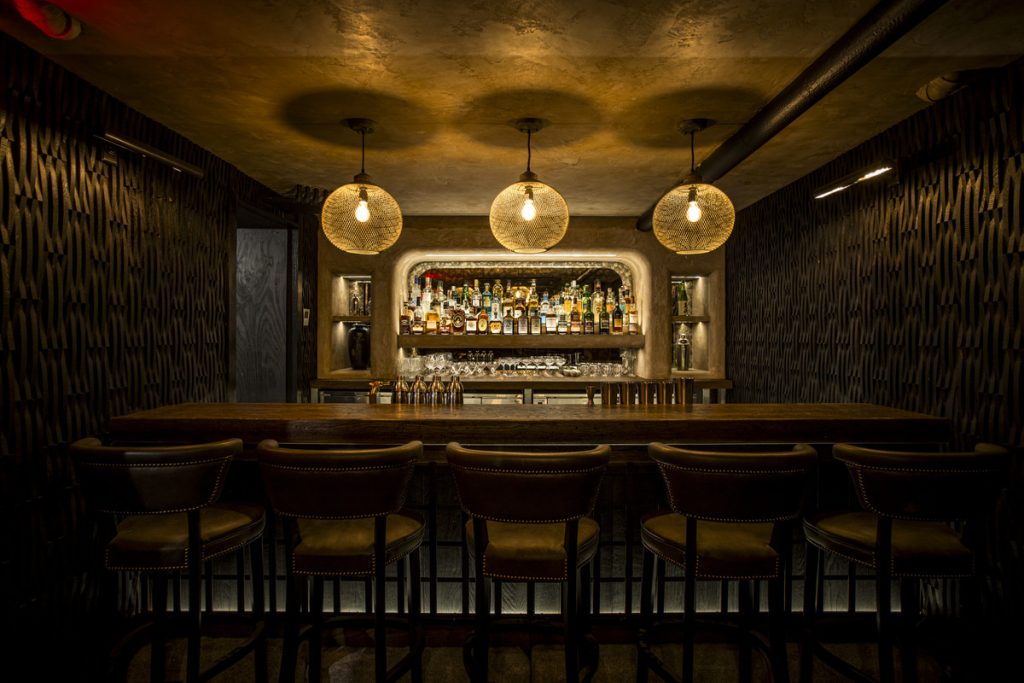SUBSCRIBE to Truly: http://bit.ly/Oc61Hj WHEN Aaron, 29, from Dublin, Ireland was interning in New York and was swiping on a …
Source from https://www.youtube.com/watch?v=d5OUVgYBwKE
In the Japanese Spirit – InkedMag

Omotenashi, the ancient Japanese art of hospitality, may have originated with sado (tea ceremonies), but the same sincere, gracious spirit and appreciation for detail extends throughout much of Japanese culture today, including, perhaps most popularly, the country’s award-winning cocktail bars.
From highballs filled with hand-chipped, pedigreed ice to oshibori (warm towels) delivered with silver tongs, Japanese mixologists carry on the tradition of omotenashi: serving patrons with care. Now, American cohorts are following suit as Japanese-style bars pop up across the United States in places like San Francisco, where Bar Iris has earned critical attention for its artisanal cocktails inspired by Japanese culture and ingredients. In Chicago, Kumiko, a Japanese dining bar, won a place on “The World’s 50 Best Bars 2022” list.
Notably, New York has seen an influx of Japanese bars since the 1993 opening of Angel’s Share, one of the city’s first true craft cocktail dens and an early pioneer of the trend, equipped with a staff of Japanese-trained bartenders. In recent years, disciples from Angel’s Share went on to enjoy success on both continents.
Japanese bartender Shingo Gokan, whose renowned SG Group holds the record for winning the most awards by “The World’s 50 Best Bars” and “Asia’s 50 Best Bars” with 50 cumulative honors, ran Angel’s Share for a decade as bar director before returning to Asia. This year, he opened Sip & Guzzle, a bi-level cocktail bar in his old stomping ground of Manhattan. Sip, the venue’s subterranean speakeasy inspired by 1860s Edo, serves reinterpreted cocktails from Gokan’s Tokyo bar that highlight technique-driven creations with Japanese ingredients like wagyu beef and sushi vinegar.

Tokyo native Takuma Watanabe, another Angel’s Share alum who served eight years as head bartender, now runs his acclaimed solo project in New York City: Martiny’s. A nod to Watanabe’s favorite cocktail as well as French American sculptor Philip Martiny whose Gramercy Park studio used to occupy the bar’s three-story carriage house, the warm, inviting space exhibits all the hallmarks of the classic Ginza bar that Watanabe wanted to share with his adopted home.
“New York has a lot of amazing bars, but something was missing,” he says, “I wanted a place that was more elegant and hospitality-forward that reminded me of Japan.”

Inside Martiny’s, it’s easy to feel transported, from the soft jazz and bartenders decked out in smartly tailored suit jackets to the thoughtful presentation and Kimura glassware, a Japanese company known for their elegant, paper-thin vessels — perfect for chilling drinks.
But not every bar is a carbon copy of the Tokyo set, nor are they all meant to be. Some, such as New York’s Bar Goto, bill themselves as New York bars with Japanese flair.
“I believe there is a difference between Japanese-inspired and Japanese-influenced bars — inspiration comes from the outside, while influence comes from within,” says Julia Momosé, co-owner of Kumiko, who was born and raised in Japan. “At the core of all great bars is the heart of hospitality. In Japanese bars, this hospitality manifests itself in nuanced ways that are often missed by those who did not grow up with the culture of omotenashi. But it evokes a feeling that people want to experience or that bartenders want to try to recreate.”
At the heart of the experience lies what every guest comes for in the first place: cocktails. Similar to craft cocktail culture, Japanese bars place a heavy focus on fresh, seasonal ingredients prepared with razor-sharp skills and a local twist (think Nikka whisky, shiso, and yuzu). Critically, every drink receives personalized attention and is prepared one by one with laser focus and consistency.
For Watanabe, preparing balanced cocktails has also required him to look beyond the bar.
“I’ve learned from bartenders, of course, but I’ve learned more from chefs,” he says, adding, “I go to a lot of different restaurants to understand the flavor profiles and increase my palate. I like to talk to the chefs and see how they balance everything. In the Japanese way of making food, it’s not always about adding something — sometimes it’s about taking it away.”

It’s fitting then that Martiny’s offers its guests sophisticated snacks like karaage topped with caviar and scallop custard created by Wayne Cheng, whose resume includes Eleven Madison Park and Masa. Kumiko and Bar Iris, which is connected to Nisei, a Michelin-starred restaurant, also highlight creative Japanese fare.
“Bar Iris is where Chef David Yoshimura recreates his favorite dishes from his childhood while combining them with the California bounty,” says bar manager Timofei Osipenko. “A lot of our flavors and concepts are inspired by the ingredients in the kitchen, such as shichimi, hoshigaki, and tsukemono.”

With any luck, the values, quality, and tastes of Japanese bar culture will endure in the U.S. “I’m trying to educate younger bartenders as much as I can so they can grow their skills,” Watanabe says. “I want to do this — I really want to support them for the future.”
For more articles like these, click here.
22 Plastic Surgeries – How Will My Blind Date React? | HOOKED ON THE LOOK
SUBSCRIBE to Truly: http://bit.ly/Oc61Hj MATEO from New York has had a plethora of cosmetic treatments; from numerous BBLs …
Source from https://www.youtube.com/watch?v=T5oRym0d0ss
Tattoo Dos and Don’ts with Janda Farley | INKED
NYC tattoo artist, Janda Farley, shares some of her dos and don’ts when it comes to tattooing, and getting tattooed. WEBSITE: …
Source from https://www.youtube.com/watch?v=pWm-WfvND3U
My 26-Year-Old Model Girlfriend Is Out Of My League | LOVE DON’T JUDGE
SUBSCRIBE to Barcroft TV: http://bit.ly/Oc61Hj A COUPLE with a 28-year age gap are used to getting looks and stares when they …
Source from https://www.youtube.com/watch?v=H94tl18A-d0
Thank You From Barcroft TV
Thank You From Barcroft TV SUBSCRIBE: http://bit.ly/Oc61Hj We recently reached two massive milestones here at Barcroft TV: …
Source from https://www.youtube.com/watch?v=cKdl1yTsowI
Towering 7ft 1in Teen Dreams Of Sporting Stardom
SUBSCRIBE to Barcroft TV: http://bit.ly/Oc61Hj TOWERING over his teammates at 7ft 1in tall, 17-year-old Brave Williams is hoping …
Source from https://www.youtube.com/watch?v=WqWlK1tOSco
The Plus Size Model Fighting For Bigger Men | SHAKE MY BEAUTY
SUBSCRIBE to Barcroft TV: http://bit.ly/Oc61Hj CRUSHING stereotypes and challenging norms has become the mission of a …
Source from https://www.youtube.com/watch?v=7Huvqxryd1w
My Identical Twin Is Transgender | MY TRANS LIFE
SUBSCRIBE to Barcroft TV: http://bit.ly/Oc61Hj IDENTICAL twin Branden Miguel has revealed how he found the strength to come …
Source from https://www.youtube.com/watch?v=vSwlTwuAhC4
I’m A Mother Of 10 – With 3 Sets Of Twins | MY EXTRAORDINARY FAMILY
SUBSCRIBE to Truly: http://bit.ly/Oc61Hj KIMBERLY, 37, from New York, is a mum of 10 – and she’s had 3 sets of natural twins.
Source from https://www.youtube.com/watch?v=6fgyFVfdeGE














